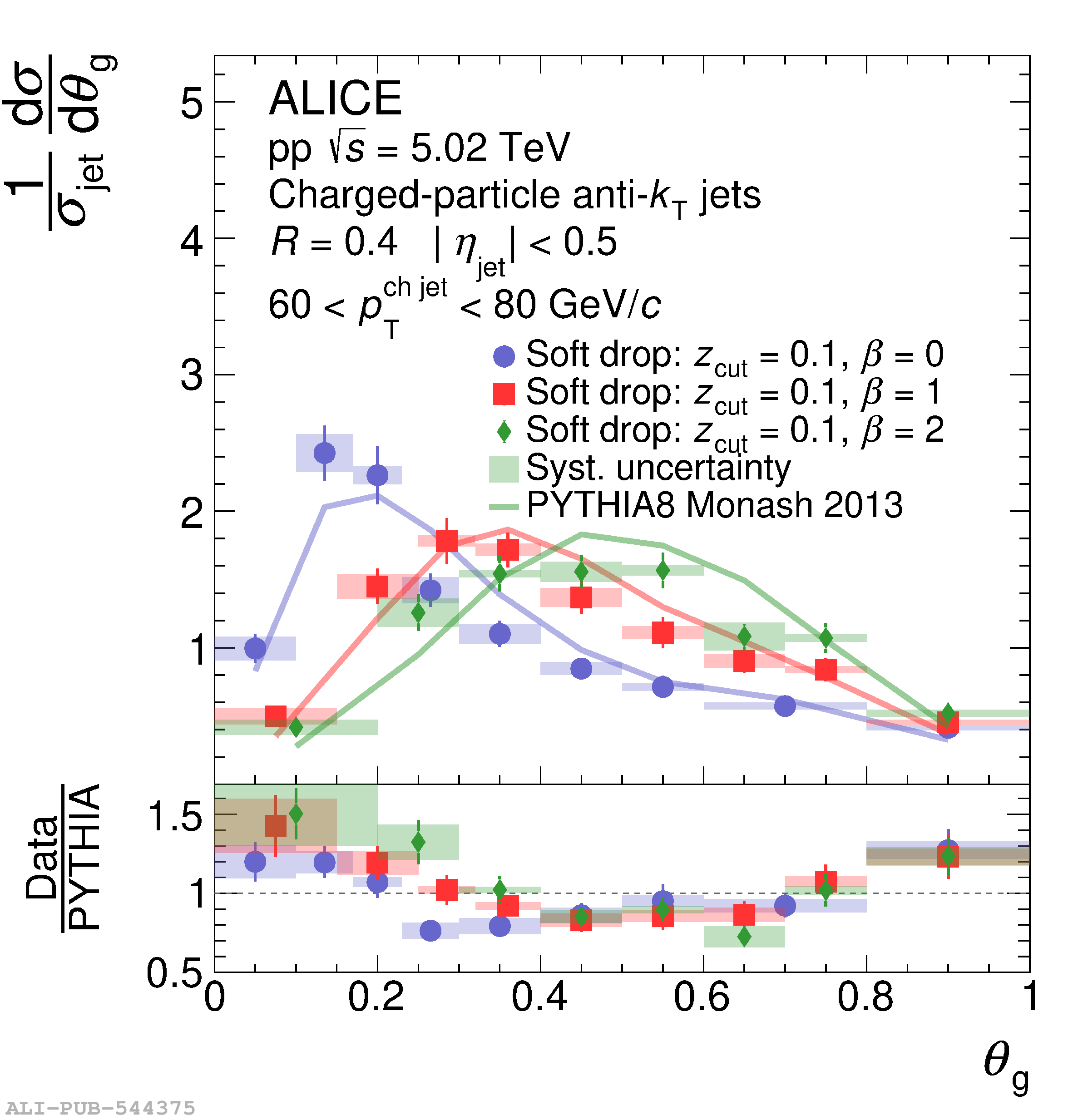This article presents measurements of the groomed jet radius and momentum splitting fraction in pp collisions at $\sqrt{s}=5.02$ TeV with the ALICE detector at the Large Hadron Collider. Inclusive charged-particle jets are reconstructed at midrapidity using the anti-$k_{\rm{T}}$ algorithm for transverse momentum $60<~ p_{\mathrm{T}}^{\rm{ch\; jet}}<~80$ GeV/$c$. We report results using two different grooming algorithms: soft drop and, for the first time, dynamical grooming. For each grooming algorithm, a variety of grooming settings are used in order to explore the impact of collinear radiation on these jet substructure observables. These results are compared to perturbative calculations that include resummation of large logarithms at all orders in the strong coupling constant. We find good agreement of the theoretical predictions with the data for all grooming settings considered.
JHEP 05 (2023) 244
HEP Data
e-Print: arXiv:2204.10246 | PDF | inSPIRE
CERN-EP-2022-056
Figure group








